Kangerlussuaq
67°00′ N, 50°72′ W
12°C, Overcast

08:00 hrs – Here we are, last morning of our Arctic Safari, anchored in Sondrestrom Fjord, 20 kms from Kangerlussuaq. Up on deck, the surrounding low mountains reach down to the water through mist. Small boats bob in the bay, and a larger cruise ship like ours is anchored here too.
Officials from the airport, customs officers, come on board to check passports and bags. Passengers on the first flight file down to the mudroom with their bags. Each passenger picks up their passport at the entrance, checks in with the airport official who tags their luggage. Then, as they pass through the other side of the mudroom, the crew takes their luggage to the gangway where it is put in a shipping container on a barge, transferred to a truck on shore, and taken to the airport. We won’t see our luggage again until we land in Toronto.

Low tide at the wharf at Sondrestrom Fjord. The Ocean Endeavour is on the left.
At 11:00, we staff head ashore. The passengers follow soon after. First, we are going on a tundra tour up the mountain on the other side of town. I’ve done this tour before. The buses are waiting at the wharf. This time there are tundra buggies with big wheels, not just greyhound-style buses.
I’m assigned to one of the tundra buggies. The passengers climb aboard through a door at the back. The driver tells me to sit in the front. I clamber up. There is a window behind my seat, between me and the passengers, so they can hear the driver’s commentary. Everyone looks like they are enjoying themselves. The buggy jolts off down the roughly paved road towards Kangerlussuaq.
The driver talks about the area as we bump along. The rocky hillsides we pass alongside are three billion years old. I can’t tell the difference between the old and younger rocks, but am amazed people can. The roadside is covered with low bushes and moss and grasses. The long fjord is beautiful, but the silt left by the receding glacier winds down the valley like a riverbed.
We drive through Kangerlussuaq, which was established as an American airbase in 1941, but sold to Greenland for $1 US in 1992. It now has a population of 1,000 during the summer and 700 in the winter. Surprisingly, the driver says it is ranked #2 in the world for having the most days of sun –300. Las Vegas is #1. However, today must be one of the 65 sunless days. 
We cross over the rushing river on a wooden bridge that seems barely wide enough for two-way traffic. The buses stop and we all get out to peer over into the ravine at the silty gray water charging beneath us. There is no sidewalk or railing here. I find it a little nerve wracking– 200 people climb out of the buses and to look over the edge.
Then back in the buses to drive up the hillside. The roads are made of silt and there are no barriers along the edge. Just yellow oil barrels, joined by cable. The river valley drops off beside us. I’m not big on heights and this trip up the mountainside is always my least favourite part of the entire expedition.
The view at the top of the road is worth the trip up, though. 
From here you can see the tops of the mountain peaks and off in the distance — the Greenland ice cap.

Johnny Issaluk got out of our tundra buggy with his drum and beat a haunting rhythm on the mountain top as the other buses arrived.
Everyone got out snapped photos for 20 minutes, and then back on the buses to head down to the airport. No muskox spotted, though our driver mentioned that the possibility of seeing them was high.
The buses dropped us off at the airport. And Jena and I go off to explore the little grocery store. Lots of jars with Danish labels.
Back in the airport, I buy two cups of tea and a danish for something like 450 kroners. I receive enough change from my $20 CAN to buy a bag of Haribo gummies for the plane.
At first it looks like I will land in Toronto in time to catch an 11:30 connection to Ottawa. But the planes coming from Canada with the Into the NWP folks are delayed.
I have a seat on the second plane with the rest of the staff, but because of a delay with the arrival of the first plane, our plane leaves first. But it takes off closer to 6:00 and so there is no longer a possibility of catching a connecting flight tonight.

Finally on board and airborne, flying westward to Terminal 3 at Toronto Pearson Airport. Amber is my seat mate.
We’ll overnight at a hotel near the airport. Tomorrow morning, Amber will catch a flight to Calgary and make her way home to Revelstoke. I’ll catch a plane home to Ottawa, in time to see my daughter’s soccer game.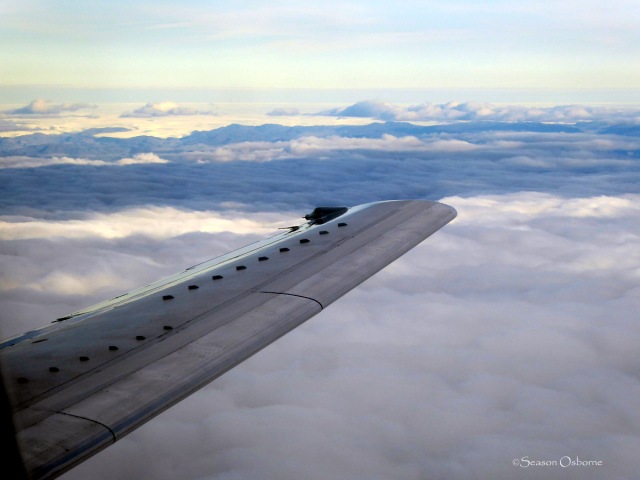
As we fly over the ethereal clouds into the setting sun, I reflect on the last two weeks. We didn’t get to all the places we thought we would, but that’s Arctic travel. You go where the weather and ice dictates and enjoy the adventure. Without a doubt, this was an exceptional one. I highly recommend it.











 The view from further up the valley is amazing. Grasses and vegetation seem slightly taller and more abundant here. Evidence of animal life is apparent too with caribou antlers and a vertebrate from something lying up from the shore.
The view from further up the valley is amazing. Grasses and vegetation seem slightly taller and more abundant here. Evidence of animal life is apparent too with caribou antlers and a vertebrate from something lying up from the shore.







 We awake at anchor in Isabella Bay, which is part of Ninginganiq National Wildlife Area, about 120 kilometres south of the community of Clyde River on Baffin’s north-east coast. The area is a renowned bowhead whale habitat. In fact, Isabella was a whaling ship that visited the region in the early 19th century for ‘economic’ purposes.
We awake at anchor in Isabella Bay, which is part of Ninginganiq National Wildlife Area, about 120 kilometres south of the community of Clyde River on Baffin’s north-east coast. The area is a renowned bowhead whale habitat. In fact, Isabella was a whaling ship that visited the region in the early 19th century for ‘economic’ purposes.












 Then, we sailed off ‘out of’ the sunset to Greenland.
Then, we sailed off ‘out of’ the sunset to Greenland.

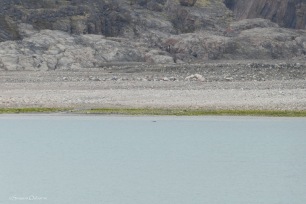
 A shot of vodka is handed to me by one of the crew as I come up the metal gangway stairs. However, it doesn’t warm me at all. At recap before dinner, we polar swimmers are awarded a badge for our courage, or foolishness.
A shot of vodka is handed to me by one of the crew as I come up the metal gangway stairs. However, it doesn’t warm me at all. At recap before dinner, we polar swimmers are awarded a badge for our courage, or foolishness.
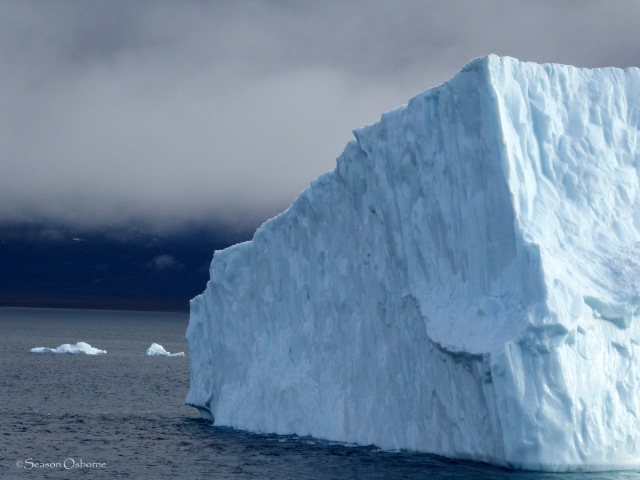
 05:30 wake up call. We are anchored in Croker Bay on Devon Island’s south shore, a kilometre from the glacier that stretches across the end of the bay. It doesn’t seem so wide, but only because we are far away. It is 4 kms wide and 50 metres high.
05:30 wake up call. We are anchored in Croker Bay on Devon Island’s south shore, a kilometre from the glacier that stretches across the end of the bay. It doesn’t seem so wide, but only because we are far away. It is 4 kms wide and 50 metres high.
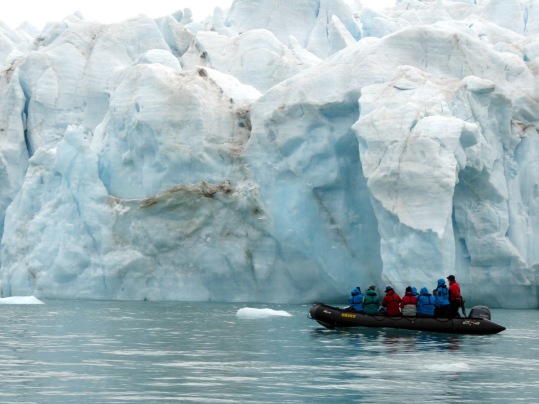
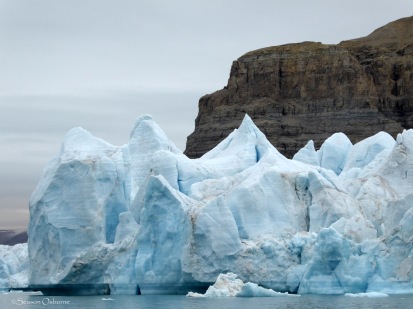 The zodiacs keep twice the height away from the ice for safety. One smallish piece splits off down the bay, and it makes an explosive gunshot sound. It tumbles into the water,then minutes later, waves ripple out towards our craft, reminding me of being on a lake in a canoe when a big motorboat rips by. Over the radios, we hear that a mother and two cubs are spotted down the west end of the glacier. We strain to look for them, but their white heads are difficult to follow, particularly from a distance. We catch glimpses through binoculars of them as they swim along in front of the face of the ice.
The zodiacs keep twice the height away from the ice for safety. One smallish piece splits off down the bay, and it makes an explosive gunshot sound. It tumbles into the water,then minutes later, waves ripple out towards our craft, reminding me of being on a lake in a canoe when a big motorboat rips by. Over the radios, we hear that a mother and two cubs are spotted down the west end of the glacier. We strain to look for them, but their white heads are difficult to follow, particularly from a distance. We catch glimpses through binoculars of them as they swim along in front of the face of the ice. 































 The ship weighed anchor and headed west around Bylot, through Navy Board Inlet up to Lancaster Sound.
The ship weighed anchor and headed west around Bylot, through Navy Board Inlet up to Lancaster Sound.






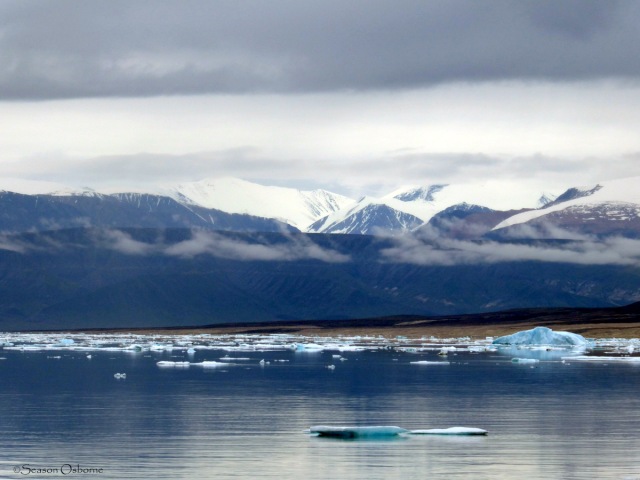
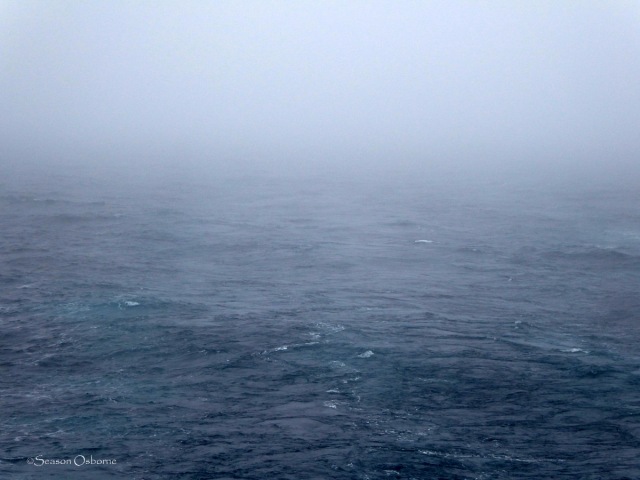 At sea. Gentle roll, pretty calm water, no big waves like last year’s crossing.
At sea. Gentle roll, pretty calm water, no big waves like last year’s crossing.

 I awoke just as we were coming into the bay outside Uummannaq. It is a stunning spot — colourful houses built right on the rocky hillside and dozens of icebergs in the surrounding bay.
I awoke just as we were coming into the bay outside Uummannaq. It is a stunning spot — colourful houses built right on the rocky hillside and dozens of icebergs in the surrounding bay.















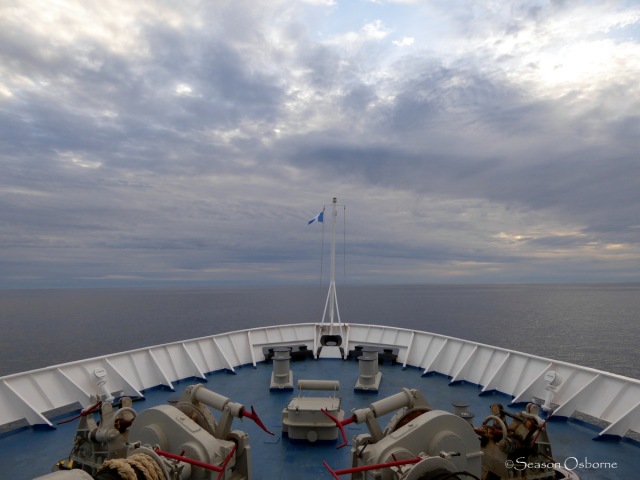
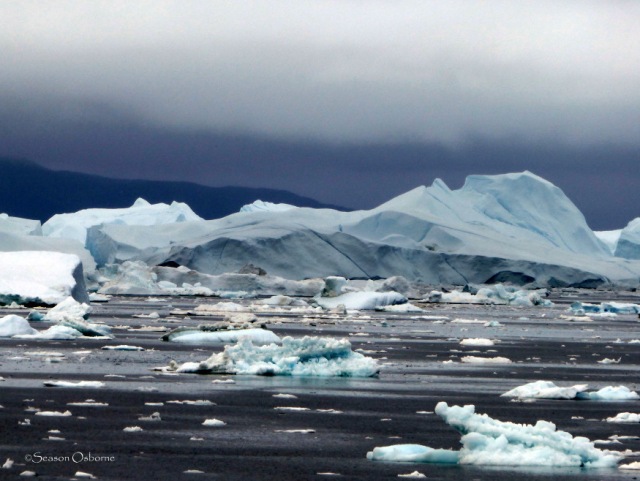
 It is extremely overcast, almost like a fog has descended. And everything looks dull: grey sky and lighter, grey/blue ice. The greyness makes it feel colder. I dress in my thermals with several layers of fleece. It’s cold sitting on the rubber side of a zodiac surrounded by ice for more than two hours. Still, it’s so awesome to float among these giant hunks of ice. There are only five passengers in our zodiac for the second cruise. Some people have chosen not to come out. It surprises me. It’s not like you get to do this every day.
It is extremely overcast, almost like a fog has descended. And everything looks dull: grey sky and lighter, grey/blue ice. The greyness makes it feel colder. I dress in my thermals with several layers of fleece. It’s cold sitting on the rubber side of a zodiac surrounded by ice for more than two hours. Still, it’s so awesome to float among these giant hunks of ice. There are only five passengers in our zodiac for the second cruise. Some people have chosen not to come out. It surprises me. It’s not like you get to do this every day.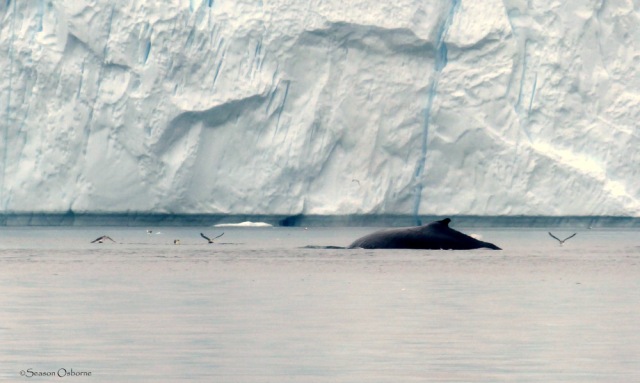





 On the way back to the ship, we passed the Sergei Vavilov at anchor. That was the ship that AC leased in 2014 for the Out of the Northwest Passage trip — the first trip I was on. Fun to see it again. Glad I’m on the Ocean Endeavour, though. The gangway was scary on the Vavilov with it’s rickety metal stairs descending down the side of the ship.
On the way back to the ship, we passed the Sergei Vavilov at anchor. That was the ship that AC leased in 2014 for the Out of the Northwest Passage trip — the first trip I was on. Fun to see it again. Glad I’m on the Ocean Endeavour, though. The gangway was scary on the Vavilov with it’s rickety metal stairs descending down the side of the ship.

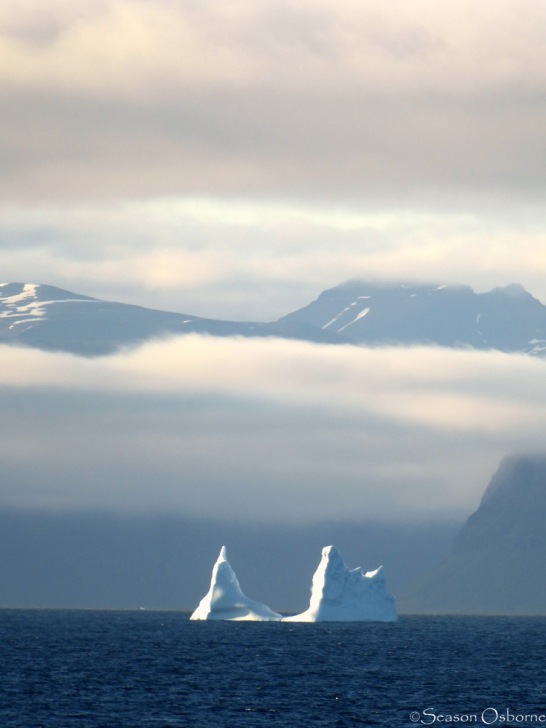












 He demonstrated 90 different ways to roll a kayak. He did one roll six times continuously. The water was 2˚C.
He demonstrated 90 different ways to roll a kayak. He did one roll six times continuously. The water was 2˚C.